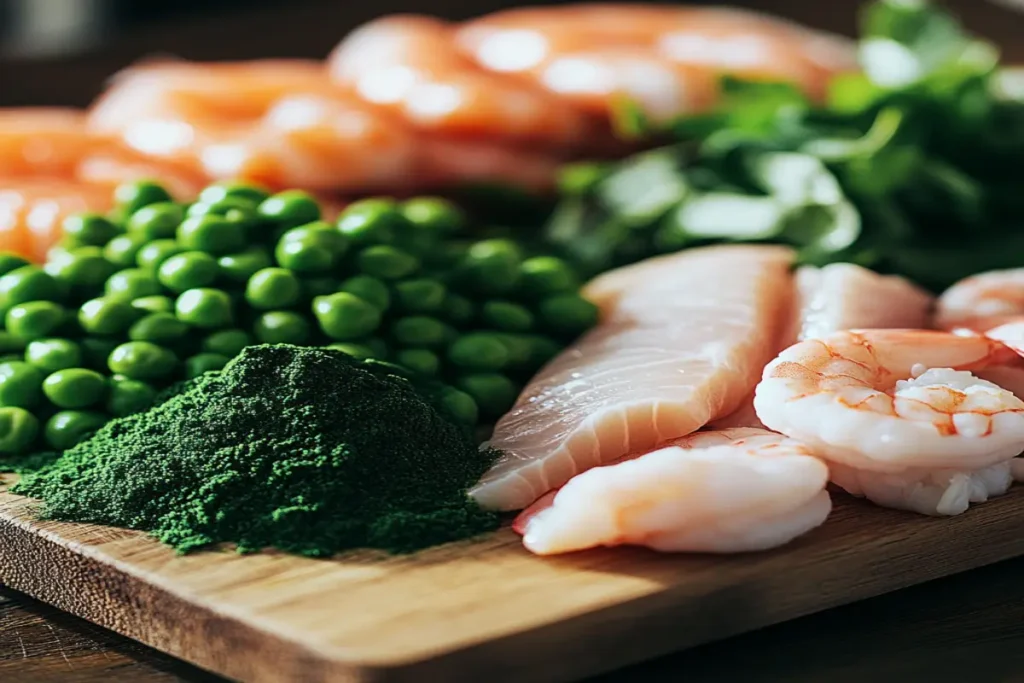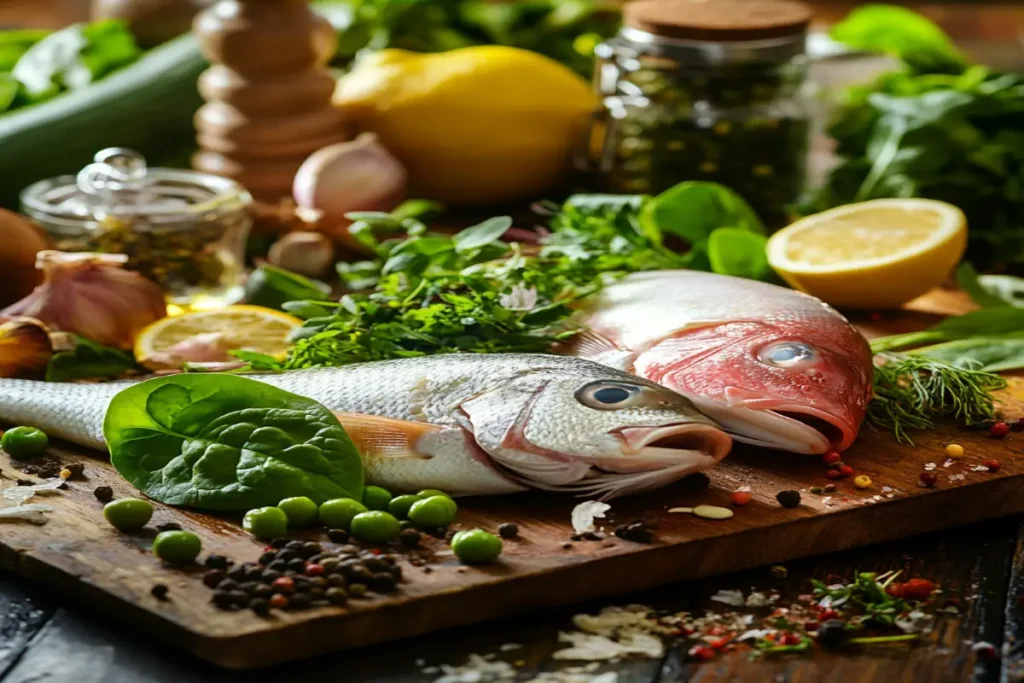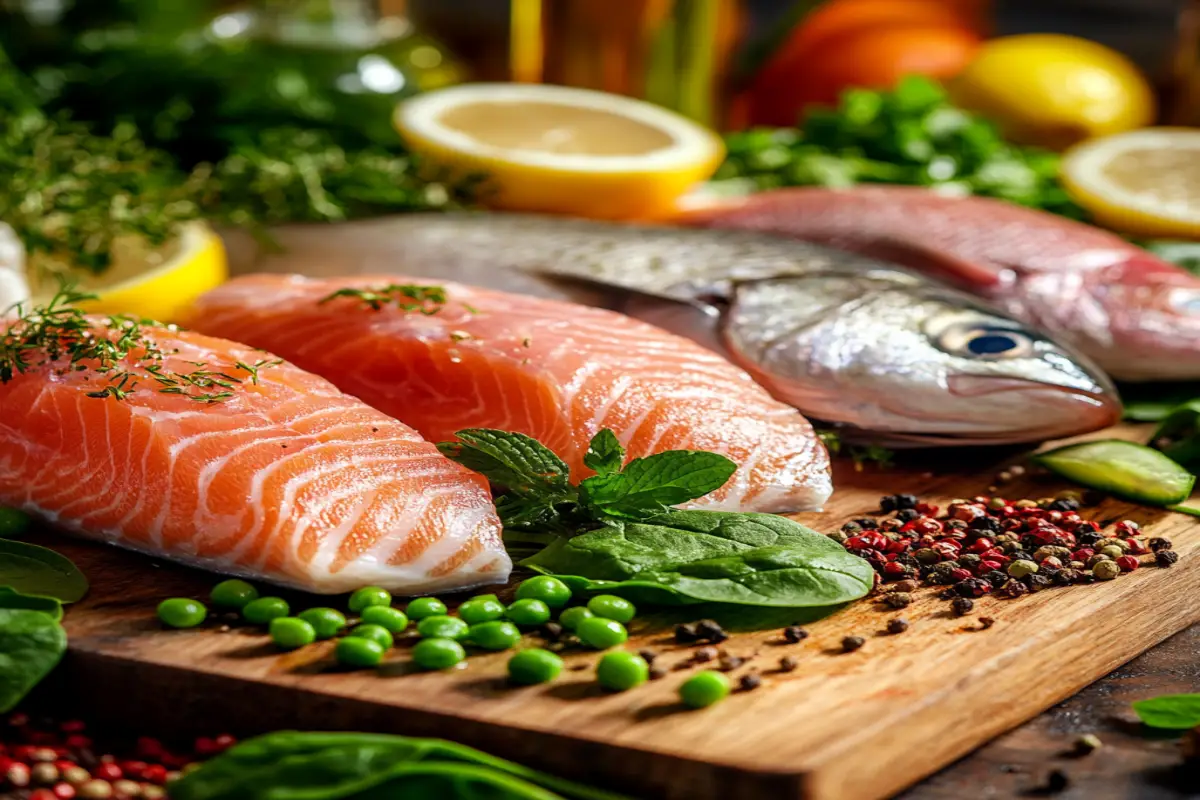Introduction
Creating the ideal fish food recipe at home ensures your aquatic pets receive the nutrition they need. While store-bought options are convenient, they often lack the tailored nutrients required for specific fish species. This article dives into the essentials of crafting customized fish food, ensuring a healthy and vibrant aquatic ecosystem. By using a combination of fresh ingredients and easy preparation techniques, you can support your fish’s health and longevity.
Homemade fish food has gained popularity among aquarium enthusiasts for its adaptability and cost-effectiveness. With the right fish food recipe, you can control every ingredient, avoiding unnecessary additives or fillers. Moreover, making fish food allows you to cater to specific dietary needs, whether your fish are herbivorous, carnivorous, or omnivorous. Transitioning to homemade options is a rewarding process, benefiting both your fish and your pocket.
Table of contents
Why Homemade Fish Food is the Better Option
Choosing a homemade fish food recipe over commercial products offers several advantages. Firstly, it provides full control over the quality and type of ingredients. Commercial fish foods often contain preservatives and artificial additives that may harm your fish in the long term. By preparing food at home, you can prioritize natural and nutrient-rich components.
Secondly, homemade fish food promotes customization. Different fish species have varied dietary requirements. Herbivorous fish thrive on a plant-based diet, while carnivorous species require protein-rich options. A personalized fish food recipe ensures every fish in your aquarium receives optimal nutrition. Additionally, it reduces waste, as you can prepare small batches tailored to your fish’s consumption patterns.
Finally, making fish food at home is cost-effective in the long run. The initial investment in ingredients may seem higher, but the ability to produce multiple servings offsets the expense. Transitioning to homemade solutions benefits your fish’s health and supports sustainable fishkeeping practices.
Essential Ingredients

Crafting a nutrient-packed fish food recipe begins with selecting high-quality ingredients. Below are the key components to consider:
- Proteins: Essential for growth and energy, especially for carnivorous and omnivorous fish. Common sources include fish fillets, shrimp, and insect larvae.
- Vegetables: Vital for herbivorous species. Options like spinach, peas, and zucchini provide fiber and essential vitamins.
- Grains and starches: A small amount of oats or rice can serve as binders in your fish food recipe.
- Supplements: Adding vitamins, minerals, or omega-3 oils enhances the nutritional value of the food.
- Gelatin or agar-agar: Used to bind the ingredients together and create a consistent texture.
Each ingredient plays a crucial role in maintaining the health of your aquatic pets. Transitioning between different recipes allows you to meet the diverse needs of your fish.
Types of Fish Food Recipes for Different Species
Different fish species require unique fish food recipes tailored to their dietary habits. Below is a breakdown:
Herbivorous Fish:
- A diet rich in plant matter.
- Include leafy greens like spinach and kale.
- Add algae or spirulina powder for added nutrients.
Carnivorous Fish:
- Focus on protein sources such as shrimp, fish, and bloodworms.
- Supplement with fish oils to support their metabolism.
Omnivorous Fish:
- Combine proteins and vegetables.
- Use ingredients like shrimp, peas, and carrots for a balanced meal.
Creating separate fish food recipes for each species ensures their dietary needs are met while maintaining a healthy aquarium environment.
Step-by-Step Guide to Making Fish Food at Home
Preparing your own fish food recipe is straightforward with the following steps:
- Choose Ingredients: Select items based on your fish’s dietary needs.
- Prepare Vegetables: Steam or blanch vegetables like spinach and peas to soften them.
- Process Protein Sources: Grind shrimp, fish, or insect larvae into a fine paste.
- Blend Ingredients: Mix vegetables and proteins together, adding supplements as needed.
- Add a Binder: Use gelatin or agar-agar to combine the mixture into a uniform consistency.
- Shape and Freeze: Form small portions and freeze them for easy feeding.
This simple process allows for endless variations of fish food recipes to suit your fish’s preferences and nutritional needs.
Tips for Balancing Nutrition:
- Variety is Key: Rotate between ingredients to provide a diverse range of nutrients.
- Avoid Overfeeding: Excess food can pollute the aquarium.
- Supplement Carefully: Use vitamins sparingly to prevent overdosing.
- Test and Adjust: Observe your fish’s health and behavior and tweak the recipe accordingly.
Balancing nutrition not only enhances fish health but also supports a thriving aquatic ecosystem.
How to Prepare Fish Food for Herbivorous Fish

Herbivorous fish require a plant-based fish food recipe to thrive. Follow these steps for preparation:
- Select Vegetables: Use spinach, kale, and zucchini as primary ingredients.
- Add Algae: Incorporate spirulina powder or nori sheets.
- Blend: Combine all ingredients into a smooth paste.
- Bind the Mixture: Use agar-agar for a gel-like consistency.
- Shape and Freeze: Create bite-sized portions and store them in the freezer.
This tailored fish food recipe ensures herbivorous fish receive the fiber and nutrients they need.
How to Make Protein-Rich Fish Food for Carnivorous Fish
Carnivorous fish thrive on protein-packed diets. Below is a simple fish food recipe for these species:
- Protein Selection: Use shrimp, fish fillets, or bloodworms as the base.
- Include Oils: Add a small amount of fish or krill oil for essential fats.
- Blend Thoroughly: Process all ingredients into a fine paste.
- Incorporate Gelatin: Bind the mixture using gelatin for easy portioning.
- Store Properly: Freeze the portions to preserve freshness.
This recipe provides the high protein levels necessary for their growth and activity.
Common Mistakes
Creating the perfect fish food recipe can be challenging without proper guidance. Here are common mistakes to avoid:
- Using Low-Quality Ingredients: Inferior ingredients can harm your fish’s health.
- Ignoring Species Needs: Each fish species has unique dietary requirements.
- Overlooking Balance: Ensure the recipe includes a mix of proteins, vegetables, and supplements.
- Improper Storage: Storing fish food incorrectly can lead to nutrient loss or spoilage.
Avoiding these pitfalls ensures your fish food recipe remains safe and beneficial for your fish.
Best Storage Practices for Homemade Fish Food
Proper storage of your fish food recipe is essential to maintain its quality. Follow these best practices:
- Freeze Immediately: Homemade fish food should be frozen within hours of preparation.
- Use Airtight Containers: Prevent contamination by storing food in sealed containers.
- Label and Date: Always label portions with the preparation date.
- Avoid Refreezing: Only defrost the quantity needed for feeding.
By adhering to these practices, your fish food recipe will stay fresh and retain its nutritional value.
Frequently Asked Questions
Here are answers to common questions about crafting a fish food recipe:
- Can I use raw ingredients? Yes, but ensure they are clean and free from contaminants.
- How long does homemade fish food last? Frozen fish food can last up to three months if stored properly.
- Is homemade fish food cost-effective? Yes, especially for large aquariums or multiple species.
- What supplements should I add? Consider vitamins, omega-3 oils, and spirulina.
Understanding these FAQs simplifies the process of making your own fish food.
Benefits of Using Fresh Ingredients in Fish Food
Fresh ingredients elevate the quality of your fish food recipe. Here are the main benefits:
- Enhanced Nutrition: Fresh vegetables and proteins retain more nutrients.
- Improved Taste: Fish are more likely to eat and enjoy fresh food.
- Reduced Chemicals: Avoid preservatives and additives found in commercial foods.
- Sustainability: Utilize locally-sourced or homegrown ingredients.
Using fresh components ensures your fish receive the best possible diet.
DIY Fish Food Recipe: Cost-Effective and Customizable
Making a fish food recipe at home saves money while allowing customization. Here’s why it works:
- Lower Costs: Purchase ingredients in bulk to reduce expenses.
- Adaptability: Tailor recipes to meet the specific needs of your fish.
- Healthier Fish: Homemade food often surpasses commercial options in quality.
This approach supports a healthier aquarium ecosystem and minimizes waste.
Why Homemade Fish Food Promotes Healthier Aquariums
Homemade fish food recipes offer numerous advantages that contribute to healthier aquariums. By tailoring the food to your fish’s specific dietary needs, you ensure they receive the essential nutrients required for optimal health. Fresh, natural ingredients promote better digestion and reduce the risk of disease, enhancing the overall well-being of your aquatic pets.
One of the key benefits of homemade fish food is its role in maintaining cleaner water. Unlike some commercial options, which may contain fillers or additives, custom recipes minimize uneaten food and waste buildup. This directly supports a more stable and balanced aquatic environment.
Additionally, homemade food encourages better feeding habits. Fish tend to show more interest in fresh, high-quality meals, leading to improved behavior and activity levels. Over time, the combination of proper nutrition and a cleaner habitat creates a thriving aquarium, making homemade fish food recipes a superior choice for dedicated fishkeepers.
Conclusion
Crafting your own fish food recipe is a rewarding process that benefits both your fish and your aquarium. By preparing homemade food, you can tailor nutrition to meet the specific needs of your aquatic pets, ensuring they thrive with balanced diets free from unnecessary additives. This approach not only enhances your fish’s health but also supports cleaner water and a more vibrant aquarium environment.
Homemade fish food is cost-effective, sustainable, and allows you to experiment with fresh, high-quality ingredients. By avoiding common mistakes, storing food correctly, and regularly observing your fish’s behavior, you can create a long-term feeding strategy that promotes overall well-being.
Whether you’re a seasoned aquarist or a beginner, making fish food at home deepens your connection with your aquatic pets and ensures they live healthier, happier lives. It’s a simple yet impactful way to elevate your fishkeeping experience.

